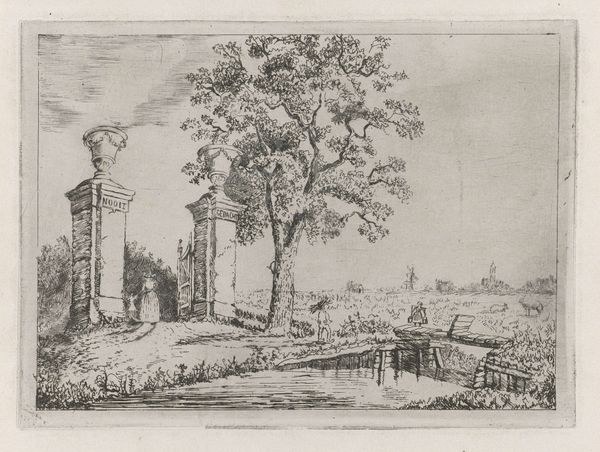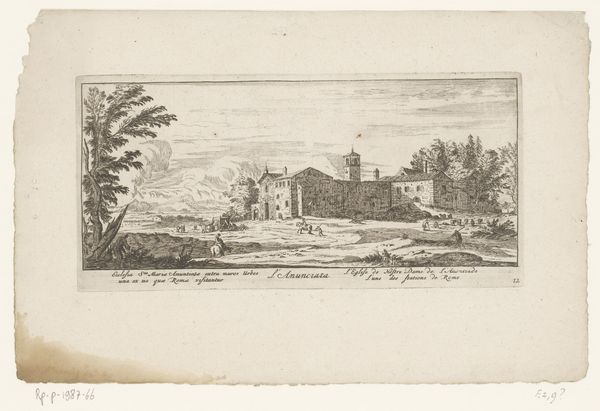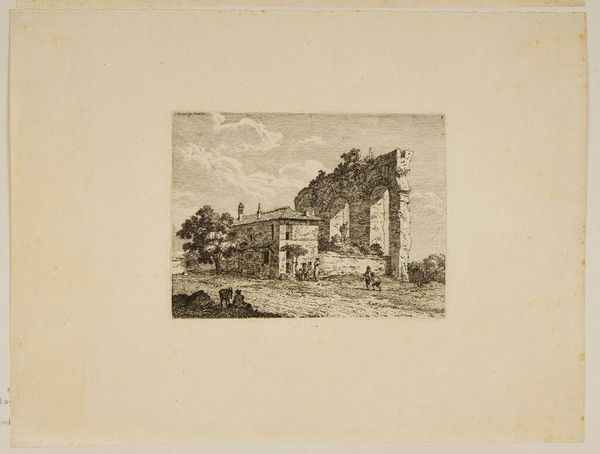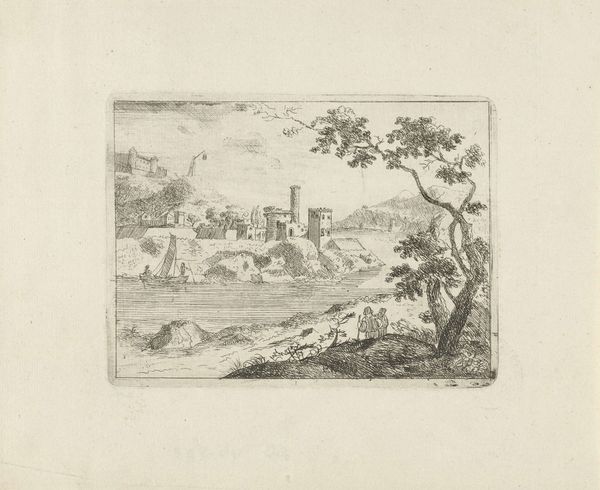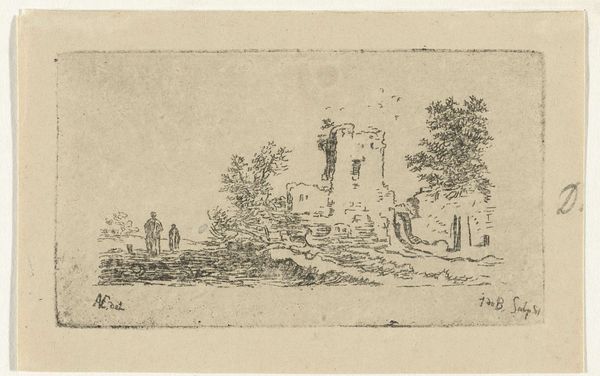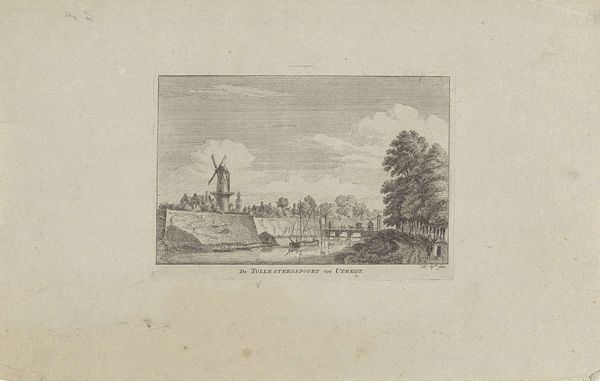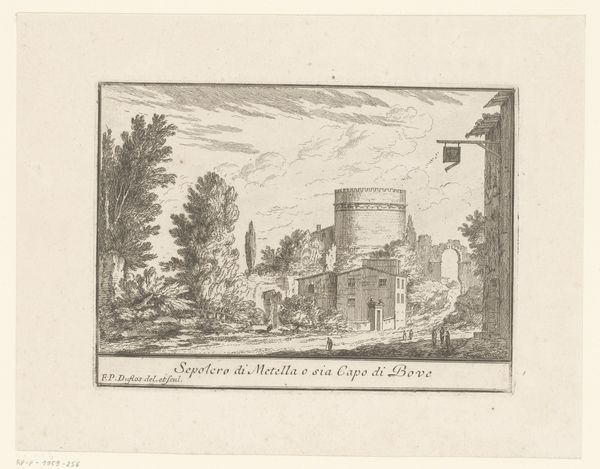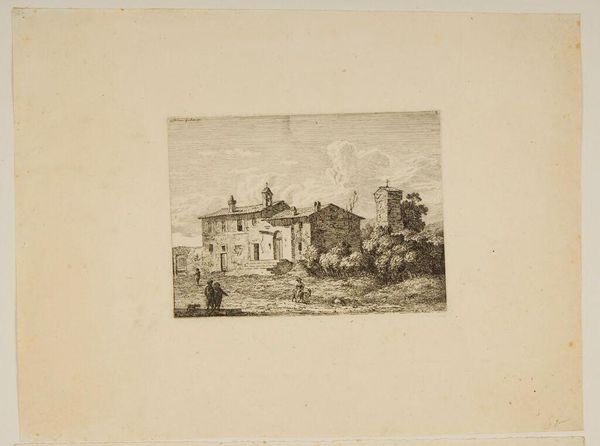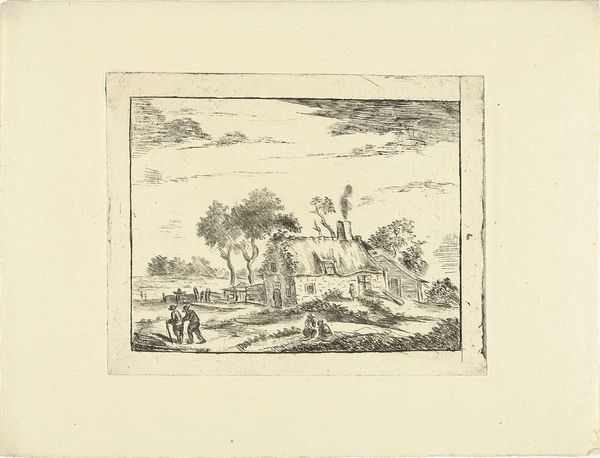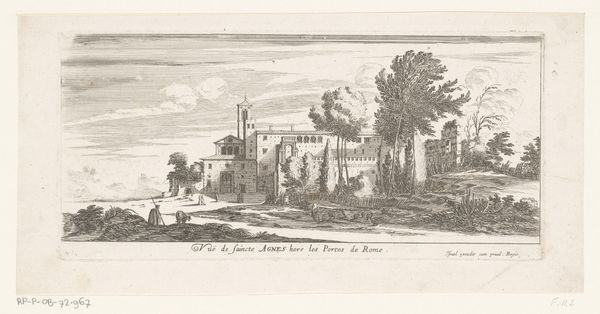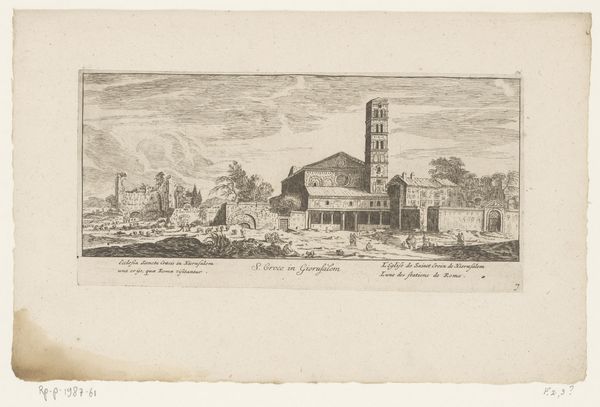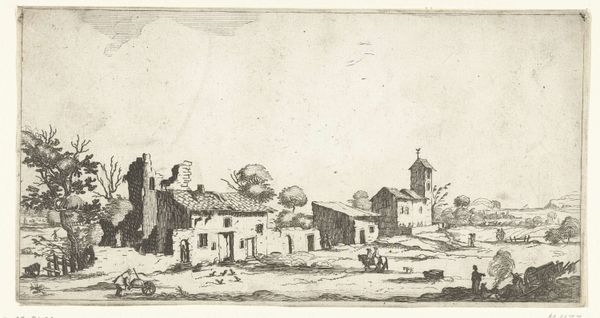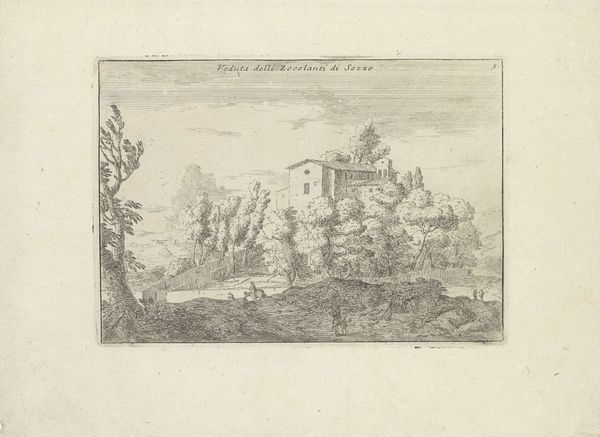
print, engraving
#
baroque
# print
#
landscape
#
line
#
cityscape
#
italian-renaissance
#
engraving
Dimensions: height 135 mm, width 191 mm
Copyright: Rijks Museum: Open Domain
Curator: This is Paolo Anesi's "Landscape with the Gate of Villa Pinciana," an engraving dating to around 1725. It currently resides here at the Rijksmuseum. What's your initial take? Editor: It's delicate, almost ethereal. There's a dreamlike quality in the light and the sparseness of the lines, which feels characteristic for printmaking from this era. Curator: The villa itself would have been a known quantity, charged with connotations of nobility, leisure, and the cultivated landscape. Presenting it this way imbues it with a particular status—an idyllic place removed from the daily toils of Rome. Editor: Yet look at the detail given to the unpaved road, the slightly haphazard lines in the fields. There's a definite awareness of the labour required to maintain even an idealized vision like this. One wonders about the production and availability of paper at that moment as well. Curator: Yes, there is an implied dialectic between artifice and the natural world, further embodied in the very icon of the gate. The gate in itself is loaded; marking the division between public and private, the space in which one has freedom to exert agency. And there’s the sculptural crowning of the gate: a reference point directing how we should reflect upon its representation of earthly dominion. Editor: That gate, a stark contrast in materiality, mediates between the land, figures, the edifice. I’m compelled by the amount of time and skill required to create such intricate patterns through the printmaking process. It elevates the status of printed media to a medium appreciated like drawings and paintings. Curator: Absolutely. The etching allowed for distribution of not only a vision of idealized landscapes but a vision of power. It perpetuated and perhaps even intensified, certain socio-political narratives through mass production. Editor: Considering Anesi's "Landscape with the Gate of Villa Pinciana", my understanding now shifts; beyond its picturesque charm, I appreciate its insight into historical power dynamics through production, labor and medium. Curator: Indeed. And perhaps this seemingly simple scene encourages us to question whose landscapes are recorded, valorized, and circulated, as representations of idyllic existences?
Comments
No comments
Be the first to comment and join the conversation on the ultimate creative platform.
